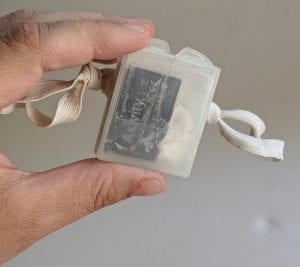A research team from the University of California, Riverside (UCR) has developed a sort of chicken Fitbit that can help monitor animal health. Utilizing a type of wearable sensor technology placed on the chickens the team was able to determine parasite infestations through the tracking of bird behavior.
“What we were able to do was to train the software and the sensor output to identify very specific behaviors,” said UCR entomologist Amy Murillo. “The sensors themselves weren’t telling us if mites were present, or how many mites were present, but they’re telling us how the behaviors change when mite levels increase.”
The research involved the northern fowl mite, a type of blood-sucking insect that can cause chickens to become ill and create lesions on their skin. The bird behavior that was monitored included pecking, preening, and dustbathing, with increased levels of preening and dustbathing commonly being associated with a parasite infestation. The research showed that once the birds were treated and the mites eliminated, behavior patterns returned to normal levels for healthy chickens.
“I was interested in trying to figure out more about how this mite negatively impacts bird behavior and bird welfare since welfare is such an important issue and it’s something that is gaining more traction but doesn’t necessarily take into consideration the parasitic status of the birds,” Murillo explained. “These mites they live on the chickens, so they don’t really care if the chickens are in cages, or cage-free, or free-range. So, they’re going to continue to be a problem regardless of where housing goes.”
Parasite infestation not only adversely affects bird health, but mites can also create economic damage for farmers in the form of depressed egg production. The so-called chicken Fitbit has proven to be successful in helping identify mite issues during the research experiments. The overall project has significant potential for further research opportunities moving forward.
“There’s definitely more work that needs to be done before we could implement this large scale but there is a potential now where there could be sentinel birds in the flock,” Murillo noted. “We could look at other health conditions or environmental conditions that might relate to specific behaviors and then these sentinel birds could be used to make real-time decisions for bird health.”
Listen to the interview below.












